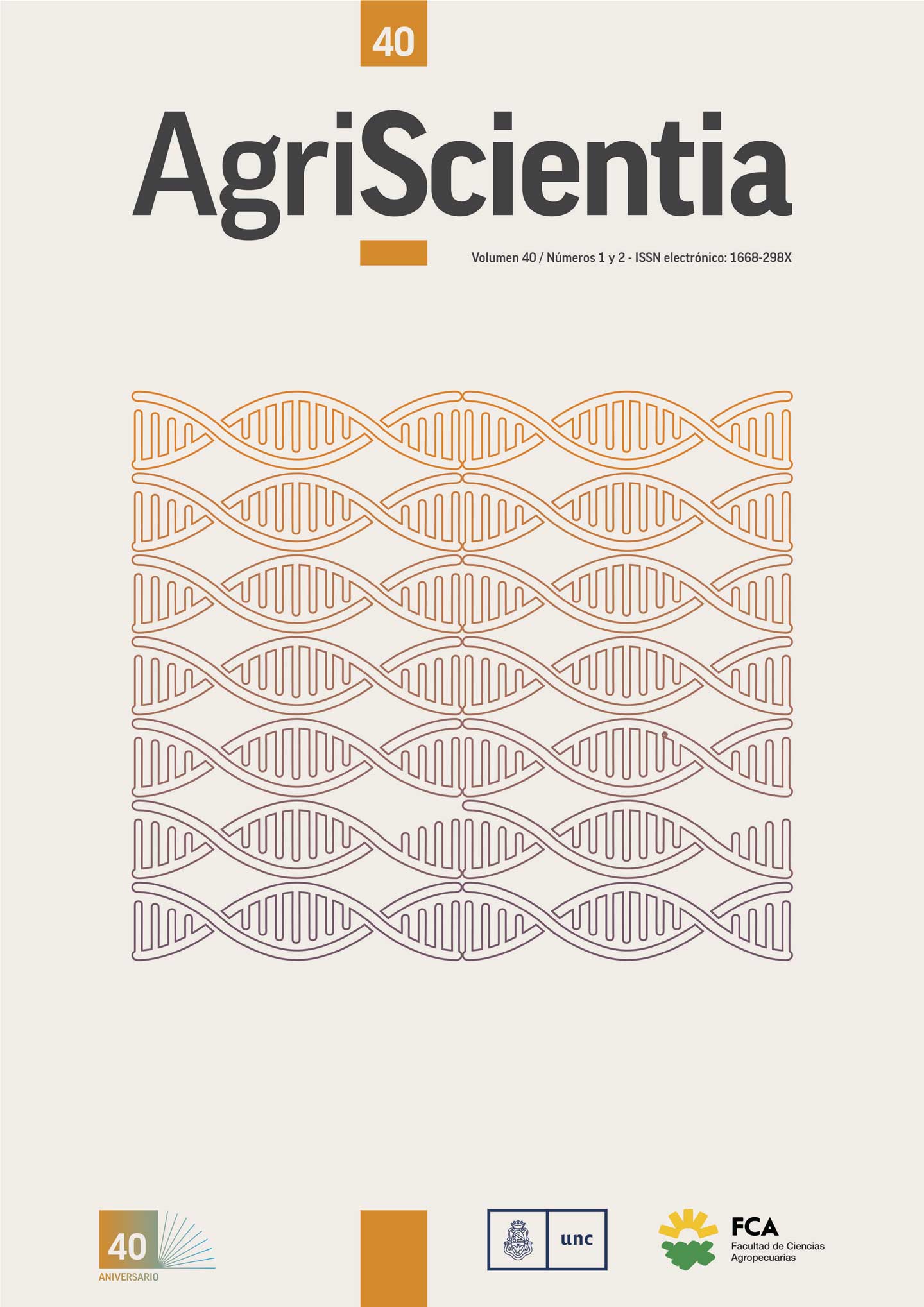Incorporation of hemp flour to obtain gluten-free noodles of higher nutritional quality
Main Article Content
Abstract
One of the most important challenges in the production of gluten-free foods is the need to improve their nutritional quality. This work attempts to produce gluten-free noodles by substituting three different percentages of corn flour with hemp and to evaluate their technological and nutritional quality. This study used corn flour with 10.33 % protein and 1.57 % fiber and commercial hemp flour with 23.57 % protein and 28.75 % fiber. The pastas were made by extrusion by adding pregelatinized starch, ovalbumin and salt to obtain the control, then substitutions were made with 5 %, 10 % and 15 % hemp flour. The addition of hemp flour did not significantly affect the most important quality indicators, such as optimum cooking time and cooking residue, and even increased the firmness of the cooked pasta. Protein and fiber content increased significantly. It can be concluded that the addition of these percentages of hemp flour does not produce a deterioration of the technological quality of gluten-free pasta and allows for an increase in fiber and protein content, generating a significant improvement of nutritional quality.
Article Details

This work is licensed under a Creative Commons Attribution-ShareAlike 4.0 International License.
How to Cite
References
Aguiar, E. V., Santos, F. G., Krupa-Kozak, U. and Capriles, V. D. (2023). Nutritional facts regarding commercially available gluten-free bread worldwide: Recent advances and future challenges. Critical Reviews in Food Science and Nutrition, 63(5), 693-705. https://doi.org/10.1080/10408398.2021.1952403
Albarracín Flores, A. S and García Medina, R. A. (2021). Propuesta de elaboración de harina a partir de semillas de cáñamo (Cannabis Sativa L.) para su aplicación en panificación. [Trabajo de titulación previo a la obtención de título, Universidad de Guayaquil]. http://repositorio.ug.edu.ec/handle/redug/57523
Alonso-Esteban, J. I., Pinela, J., Ćirić, A., Calhelha, R. C., Soković, M., Ferreira, I. C. F. R., Barros, L., Torija-Isasa, E. and Sánchez-Mata, M. (2022). Chemical composition and biological activities of whole and dehulled hemp (Cannabis sativa L.) seeds. Food Chemistry, 374, 131754. https://doi.org/10.1016/j.foodchem.2021.131754
American Association of Cereal Chemists (AACC). (2010). Approved Methods of the AACC (11th Edition). American Association of Cereal Chemists.
Brites, C. M., Haros, M., Trigo, M. J. and Pedroza Islas, R. (2007). Maíz. In: A. E. León and C.M. Rosell (Eds.): De tales harinas, tales panes. Granos, harinas y productos de panificación en Iberoamérica (pp. 73-121). Hugo Báez Editor. https://digital.csic.es/handle/10261/17118
Bustos, M. C., Pérez, G. T. and León, A. E. (2015). Structure and quality of pasta enriched with functional ingredients. RSC Advances, 5, 30780-30792. https://doi.org/10.1039/C4RA11857J
Bustos, M. C., Paesani, C., Quiroga, F., and León, A. E. (2019). Technological and sensorial quality of berry‐enriched pasta. Cereal Chemistry, 96(5), 967-976. https://doi.org/10.1002/cche.10201
Corcuera, V. R., Pennisi, M., Kandus, M. and Salerno, J. C. (2016). Composición química del grano de maíces especiales desarrollados en la Argentina para la industria alimentaria. La Alimentación Latinoamericana, 325, 50-56. https://host170.sedici.unlp.edu.ar/server/api/core/bitstreams/c3311c54-b1c5-49fe-9415-90520bc67534/content
Di Rienzo, J. A., Casanoves, F., Balzarini, M. G., González, L., Tablada, M., and Robledo, C. W. (2017) Infostat, versión 2017 [Software]. Grupo InfoStat, FCA, Universidad Nacional de Córdoba. http://www.infostat.com.ar
Flores-Silva, P. C., Berrios, J. D. J., Pan, J., Agama-Acevedo, E., Monsalve-González, A., and Bello-Pérez, L. A. (2015). Gluten-free spaghetti with unripe plantain, chickpea and maize: physicochemical, texture and sensory properties. CyTA - Journal of Food, 13(2), 159-166. https://doi.org/10.1080/19476337.2014.929178
Honorable Congreso de la Nación Argentina (2022). Ley 27669 de 2022. Marco Regulatorio para el Desarrollo de la Industria del Cannabis Medicinal y el Cáñamo Industrial. 26 de mayo de 2022. Boletín Oficial No. 34.927
Larrosa, V., Lorenzo, G., Zaritzky, N., and Califano, A. (2015). Dynamic rheological analysis of gluten-free pasta as affected by composition and cooking time. Journal of Food Engineering, 160, 11-18. https://doi.org/10.1016/j.jfoodeng.2015.03.019
Molina-Rosell, C. (2013). Alimentos sin gluten derivados de cereales. In: L. Rodrigo and A.S. Peña (Eds.). Enfermedad celíaca y sensibilidad al gluten no celíaca (pp. 447-461). OmniaScience. https://www.omniascience.com/books/index.php/monographs/catalog/download/69/262/346-1?inline=1
Rodríguez Montealegre, Á., Celada, P., Bastida, F. and Sánchez-Muniz, F. (2018). Acerca de la enfermedad celíaca. Breve historia de la celiaquía. Journal of Negative & No Positive Results, 3(12), 980-997. https://doi.org/10.19230/jonnpr.2813
Sciarini, L. S., Steffolani, M. E. and León, A. E. (2016). El rol del gluten en la panificación y el desafío de prescindir de su aporte en la elaboración de pan. AgriScientia, 33(2), 61-74. https://doi.org/10.31047/1668.298x.v33.n2.17468
Small, E. and Marcus, D. (2003). Tetrahydrocannabinol Levels in Hemp (Cannabis sativa) Germplasm Resources. Economic Botany, 57(4), 545-558. https://www.jstor.org/stable/4256739
Susanna, S., and Prabhasankar, P. (2013). A study on development of Gluten free pasta and its biochemical and immunological validation. LWT - Food Science and Technology, 50(2), 613-621. https://doi.org/10.1016/j.lwt.2012.07.040
Young, E. M. (2005). Revival of Industrial Hemp: A systematic analysis of the current global industry to determine limitations and identify future potentials within the concept of sustainability. [Thesis of Master’s Degree, Lund University]. https://www.lumes.lu.se/sites/lumes.lu.se/files/erin_young.pdf





